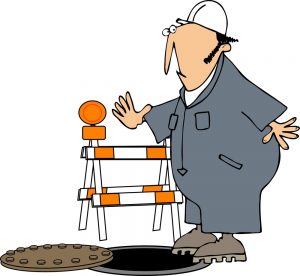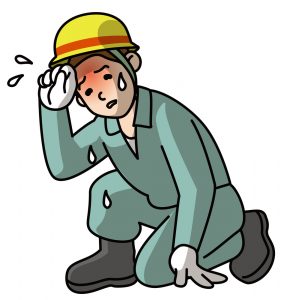 OSHA defines a “near miss” as an incident in which no property was damaged and no personal injury was sustained, but where, given a slight shift in time or position, damage or injury easily could have occurred. Put simply, someone got lucky.
OSHA defines a “near miss” as an incident in which no property was damaged and no personal injury was sustained, but where, given a slight shift in time or position, damage or injury easily could have occurred. Put simply, someone got lucky.
Because there was no damage, these near miss incidents are often ignored or not investigated as thoroughly as a recordable workplace injury or illness on the premise of “no harm, no foul.” However, by doing so, businesses fail to take advantage of a zero cost learning tool that might prevent a serious injury or illness from occurring in the not-so distant future. Indeed, experience has shown there is little question that most loss producing events were preceded by warnings or near miss incidents.
Take the real life example of a business that many years ago installed a number of small venting systems at its operations. A piece of one of the venting systems fell and almost hit an employee which almost certainly would have caused a serious injury and possibly death. The business determined that (essentially) a screw came loose causing the part to fall. It then checked the remaining venting systems and learned that other screws had starting becoming loose as well and was able to resolve the issue before anyone got hurt. Read More
 There are some OSHA lessons to be learned and things to think about from the recent Third Department case in Silvestri v. New York City Transit Authority, 2017 N.Y Slip Op 06123 (August 10, 2017). In Silvestri, the Third Department affirmed a decision by the Workers’ Compensation Board that the widow of a deceased employee working at the Transit Authority was entitled to benefits because there was substantial evidence that the decedent’s injuries and ensuing death were attributable to an accident that arose out of and in the course of his employment.
There are some OSHA lessons to be learned and things to think about from the recent Third Department case in Silvestri v. New York City Transit Authority, 2017 N.Y Slip Op 06123 (August 10, 2017). In Silvestri, the Third Department affirmed a decision by the Workers’ Compensation Board that the widow of a deceased employee working at the Transit Authority was entitled to benefits because there was substantial evidence that the decedent’s injuries and ensuing death were attributable to an accident that arose out of and in the course of his employment. Cozen O’Connor member
Cozen O’Connor member  Yesterday, American Airlines announced it cancelled approximately 45 regional flights due to intense summer heat in the Phoenix area and there were record highs recorded in the region. The intense heat waves serves as a good reminder that OSHA has guidance on addressing heat stress and employers may need to do more than simply offering employees a cold beverage or an extra rest period although certainly water, rest, and shade are some ways to prevent heat stress illnesses according to OSHA. In fact, OSHA launched a Heat Illness Prevention campaign in 2011 designed to educate employers and employees on the dangers of working in the heat and the phrase “water, rest, and shade” is OSHA’s tag line for the campaign.
Yesterday, American Airlines announced it cancelled approximately 45 regional flights due to intense summer heat in the Phoenix area and there were record highs recorded in the region. The intense heat waves serves as a good reminder that OSHA has guidance on addressing heat stress and employers may need to do more than simply offering employees a cold beverage or an extra rest period although certainly water, rest, and shade are some ways to prevent heat stress illnesses according to OSHA. In fact, OSHA launched a Heat Illness Prevention campaign in 2011 designed to educate employers and employees on the dangers of working in the heat and the phrase “water, rest, and shade” is OSHA’s tag line for the campaign. Ergonomics is the study of work. From an OSHA perspective, it is the process of designing the job to fit the employee, rather than forcing the employee’s body to fit the job. This process may include modifying tasks, the work environment, and equipment to meet the specific needs of an employee to alleviate physical stress on the body and eliminate potentially disabling work related musculoskeletal disorders (“MSDs”). The overall goal is to eliminate injuries and disorders associated with the overuse of soft tissues, e.g., muscles or tendons, awkward posture, and repeated tasks. Such common injuries include carpal tunnel syndrome, tendinitis, and other sprains and strains.
Ergonomics is the study of work. From an OSHA perspective, it is the process of designing the job to fit the employee, rather than forcing the employee’s body to fit the job. This process may include modifying tasks, the work environment, and equipment to meet the specific needs of an employee to alleviate physical stress on the body and eliminate potentially disabling work related musculoskeletal disorders (“MSDs”). The overall goal is to eliminate injuries and disorders associated with the overuse of soft tissues, e.g., muscles or tendons, awkward posture, and repeated tasks. Such common injuries include carpal tunnel syndrome, tendinitis, and other sprains and strains.